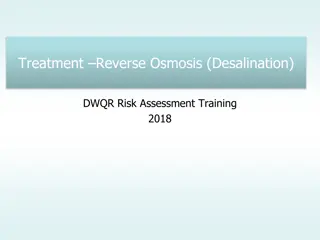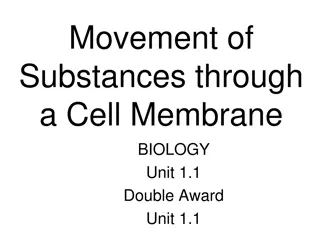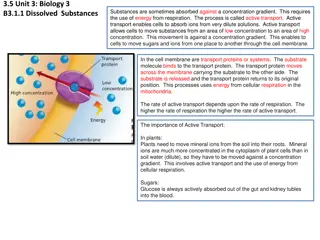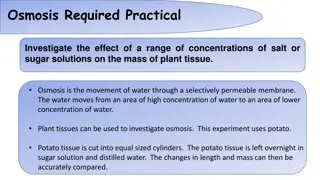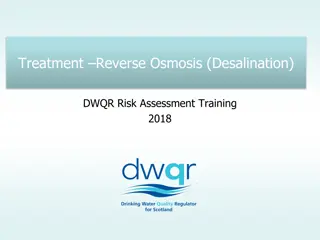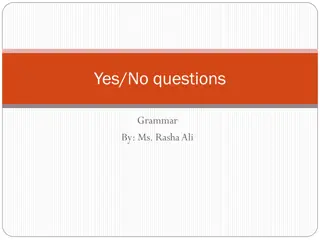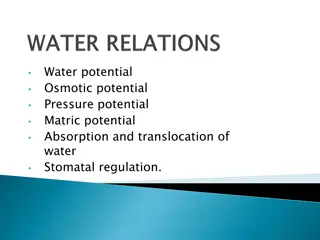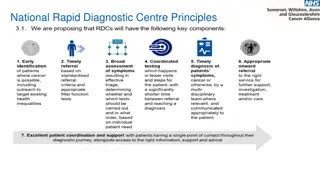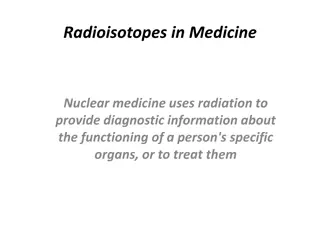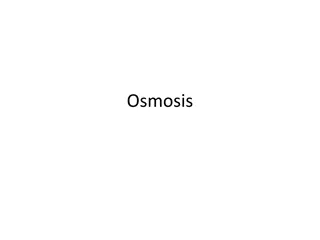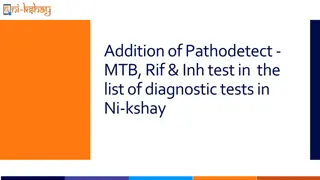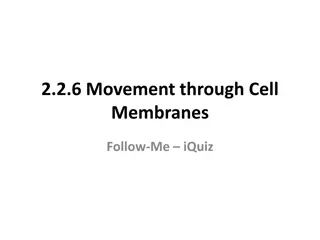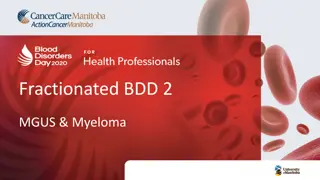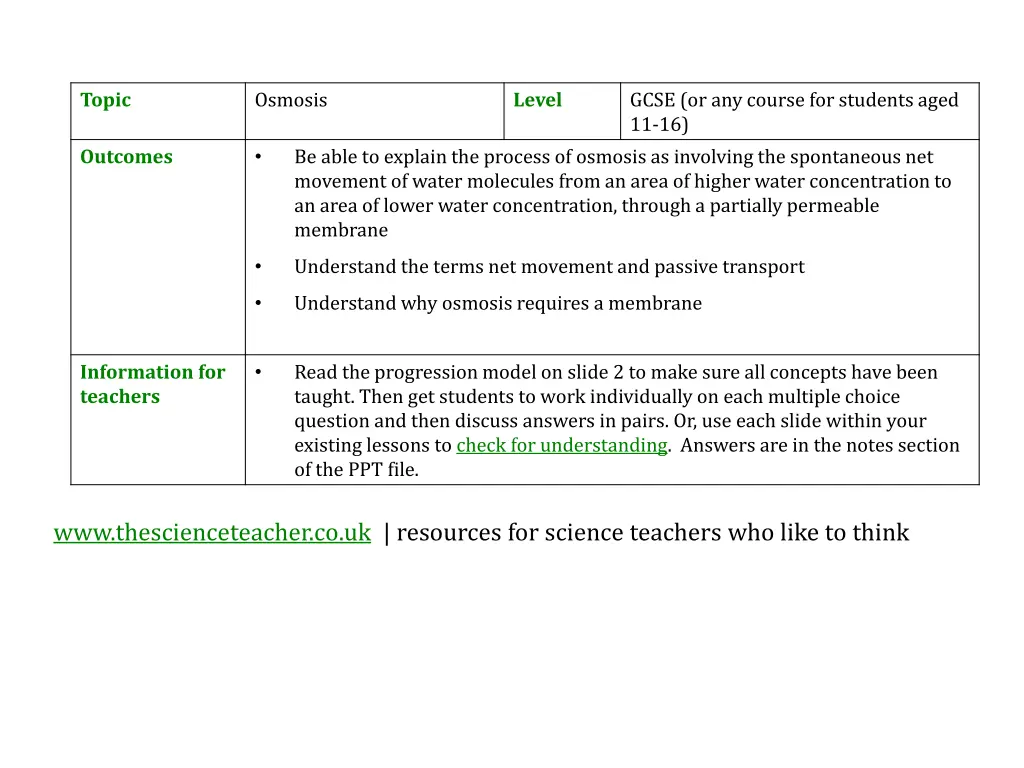
Understanding Osmosis Process in Biology
Explore the concept of osmosis in biology, where water molecules move across membranes from high to low concentration. Learn about related terms and why membranes are necessary for osmosis. Check students' understanding through engaging activities.
Download Presentation

Please find below an Image/Link to download the presentation.
The content on the website is provided AS IS for your information and personal use only. It may not be sold, licensed, or shared on other websites without obtaining consent from the author. If you encounter any issues during the download, it is possible that the publisher has removed the file from their server.
You are allowed to download the files provided on this website for personal or commercial use, subject to the condition that they are used lawfully. All files are the property of their respective owners.
The content on the website is provided AS IS for your information and personal use only. It may not be sold, licensed, or shared on other websites without obtaining consent from the author.
E N D
Presentation Transcript
Topic Osmosis Level GCSE (or any course for students aged 11-16) Outcomes Be able to explain the process of osmosis as involving the spontaneous net movement of water molecules from an area of higher water concentration to an area of lower water concentration, through a partially permeable membrane Understand the terms net movement and passive transport Understand why osmosis requires a membrane Information for teachers Read the progression model on slide 2 to make sure all concepts have been taught. Then get students to work individually on each multiple choice question and then discuss answers in pairs. Or, use each slide within your existing lessons to check for understanding. Answers are in the notes section of the PPT file. www.thescienceteacher.co.uk | resources for science teachers who like to think
Progression of ideas needed to understand osmosis 1. Diffusion is the net movement of particles from an area of higher concentration to an area of lower concentration. 2. Diffusion does not require the addition of energy. It is a passive process. 3. A solute dissolves in a solvent to form a solution. 4. A concentrated salt solution contains a relatively low concentration of water and a high concentration of salt. 5. Water molecules can pass freely through cell membranes but large or charged solute particles can t e.g. Na+ ions. 6. When a solute dissolves in water the concentration of water molecules decreases. 7. Water will move from an area of higher water concentration to an area of lower water concentration. 8. The net movement of water is the overall direction in which water will move. 9. When this takes place through a membrane we call this osmosis.
Key water molecule Water molecule Cell A Na+ Na+ ion This is a model diagram of a cell containing water molecules. Which features does this model show? Circle the correct answer(s) a) some water molecules b) all water molecules c) the cell membrane d) the nucleus
Key Water molecule Cell A Cell B Na+ Na+ ion Water molecules will: a) move from cell A to cell B b) move from cell B to cell A c) move spontaneously back and forth between cell A and cell B d) not move
Key Water molecule Cell A Cell B Na+ Na+ ion Na+ Na+ Na+ Na+ ions will: a) move freely from cell A to cell B through the membrane b) move freely from cell B to cell A through the membrane c) move freely from cell A to cell B and cell B to cell A through the membrane d) not move freely through the membrane
Key Water molecule Cell A Cell B Na+ Na+ ion Na+ Na+ Na+ Na+ ions will not move freely through the membrane because: a) Na+ions don t move b) Na+ ions are too large c) Na+ ions are charged
Key Water molecule Cell A Cell B Na+ Na+ ion Na+ Which statement describes correctly what has happened in cell A? a) Na+ ions have dissolved in water and increased the water concentration b) Na+ ions have dissolved in water and decreased the water concentration c) Na+ ions have reacted with the water molecules d) none of the above
Key Water molecule Cell A Cell B Na+ Na+ ion Na+ Which statement is true about the concentration of water in cell A? a) cell A has a lower concentration of water molecules than cell B b) cell A and cell B have the same concentration of water molecules c) cell A has a higher concentration of water molecules than cell B d) cell A has fewer water molecules than cell B
Key Water molecule Cell A Cell B Na+ Na+ ion Na+ In which direction will the net movement of water molecules occur? a) from cell A to cell B b) from cell B to cell A c) water won t move
Key Water molecule Cell A Cell B Na+ Na+ ion Na+ In which direction will the net movement of water molecules occur? a) from cell A to cell B b) from cell B to cell A c) water won t move
Key Water molecule Cell A Cell B Na+ Na+ ion Na+ Which statements about osmosis are true? a) osmosis does not require energy b) osmosis does not require additional energy c) osmosis is an active process d) osmosis is a passive process e) osmosis requires a membrane
Key Water molecule Cell C Na+ Na+ ion Na+ Would osmosis occur inside this cell? Justify your answer.
Cell A Cell B Glu Glu Glu Glucose will not move freely through the membrane because: a) glucose molecules don t move b) glucose molecules are too large c) glucose molecules are charged
Start End 24 hours later Glass tube water level solute partially permeable membrane Mark on the right-hand diagram where you predict the water level will be after 24 hours


